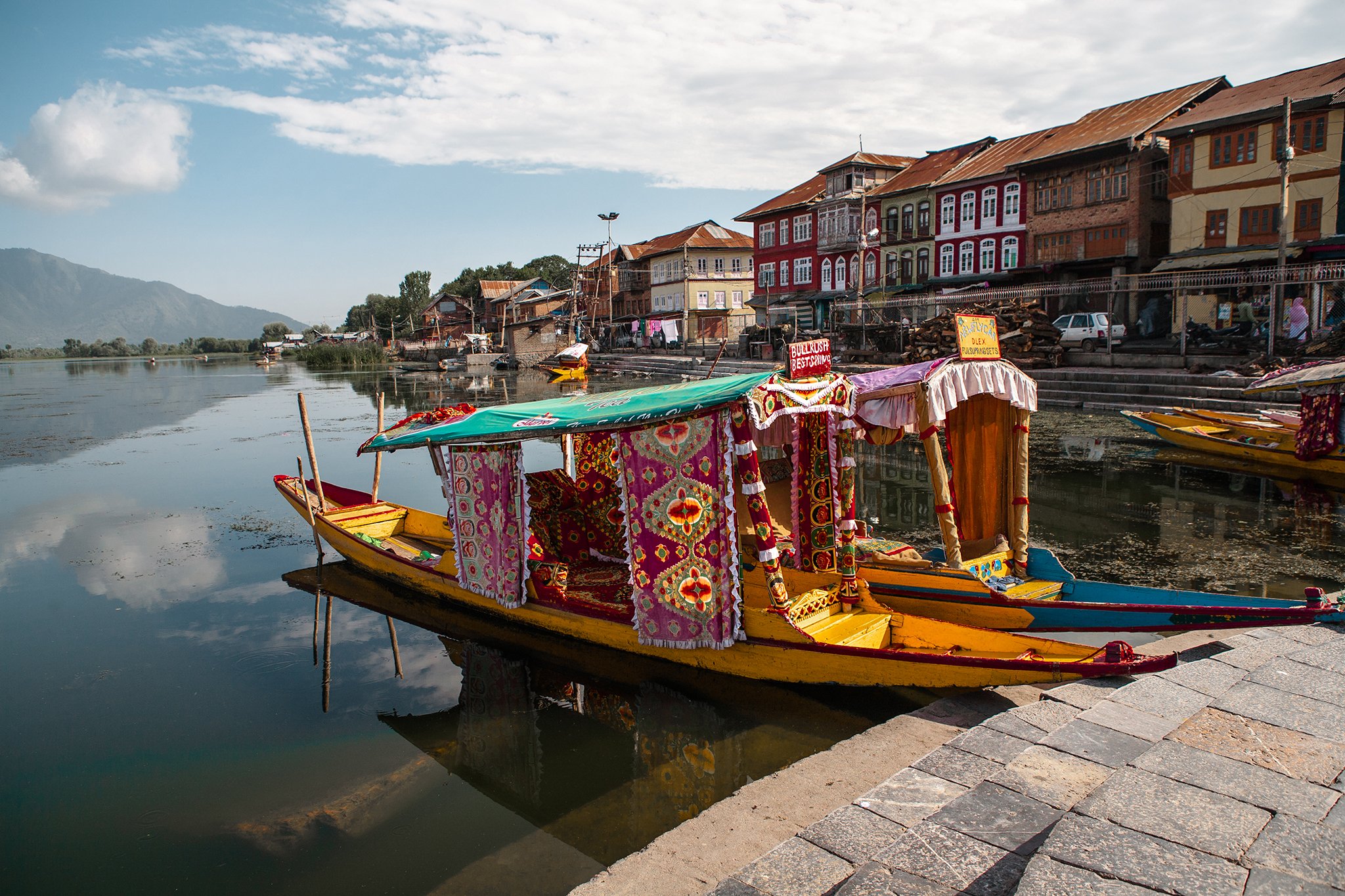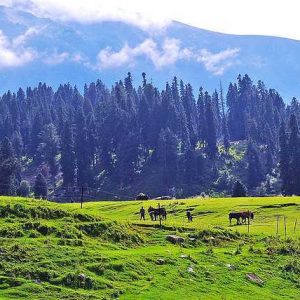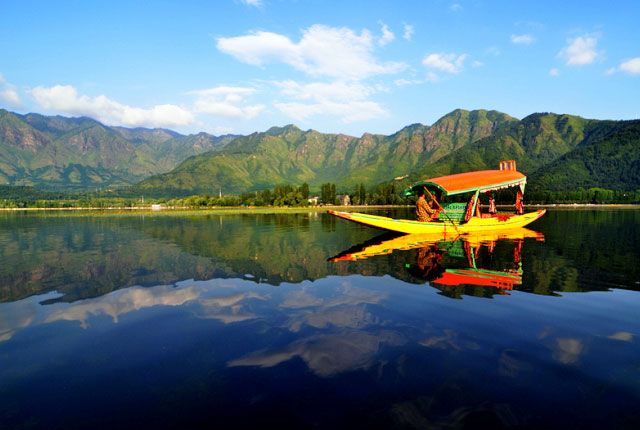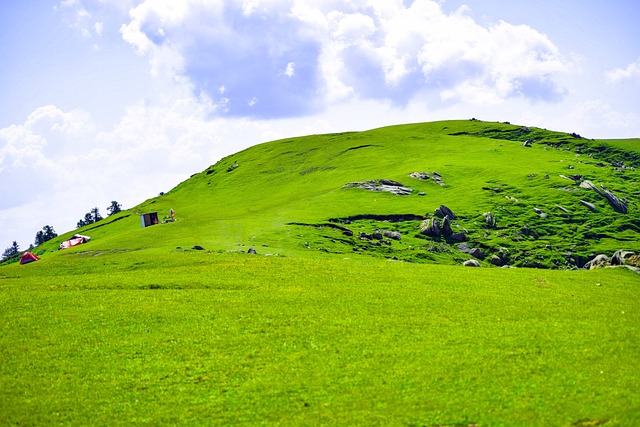
Srinagar in March
Table of Contents
ToggleOverview
Placed in the center of the Himalayan valleys, Srinagar, the crown of Kashmir, is enchanted in a phenomenal manner in March. As winter dissolves its icy grip, the initial signs of spring start to flower everywhere in the valley, and tourists have an experience that is unique and unforgettable. With snow still covering the far-off peaks, flowers just starting to bloom on the gardens, and the famous Dal Lake glinting in clear blue skies, Srinagar in March presents a hard-to-find combination of winter serenity and spring renewal.
Whether it is a romantic escape, an excursion hike, or a spiritual retreat, planning a trip to Kashmir in March could be one of the best decisions you ever take. Here’s everything you need to know to plan the most from your visit.





Srinagar Weather in March: A Transition Between Two Seasons
March is a transitional month for Srinagar. Srinagar weather in March is pleasantly unpredictable—days can be cold to mildly warm, and nights tend to fall near freezing. The temperature hovers around 2°C to 15°C. It’s not uncommon to witness light snowfalls in early March, especially in the higher reaches like Gulmarg and Sonmarg, while towards late March, colorful flowers start blooming in the Mughal Gardens of Srinagar.
This change of seasons has the advantage of both worlds for travelers: the chance to experience snow activities in places like Gulmarg coupled with the chance to witness the early blooms of the famous tulips and almond blossoms signaling the onset of spring.
Why Visit Srinagar in March?
The majority of people ask, “Is March a good time to visit Kashmir?” Yes, certainly. Actually, Srinagar in March is a peaceful relief from the summer tourists that infest Kashmir in April and May. Below are good reasons to visit at this time:
- Less Crowds
In contrast to the busiest tourist periods, March has fewer travelers. It is, therefore, easier to visit popular Srinagar tourist attractions such as the Mughal Gardens, Dal Lake, and Hazratbal Shrine without hordes of people.
- Reduced Expenses
Hotels and houseboats are usually cheaper, with numerous establishments giving discounts during this off-season. March’s reduced airfares and affordable Srinagar tour packages are perfect for travelers on a budget.
- Uncommon Photography Opportunities
The contrast between snow-covered mountains and blooming flowers makes such a wonderful background for photographers. Fog in the mornings over Dal Lake and almond blossoms near Badamwari form postcard-perfect scenes.
Top Activities to Do in Srinagar in March
If you are wondering what to do in Srinagar in March, here is a handpicked list which has culture, adventure, and nature in the perfect ratios.
- Shikara Ride on Dal Lake
A Shikara ride on Dal Lake is an experience to be done at any time of the year. But in March, the lake is extra special. With fewer boats on the lake and the landscape gently shedding winter blues, the ride is a serene, even meditative experience.
You may wander through floating bazaars, go to the floating post office, or simply float noiselessly as the shadow of white mountains dances on water.
- Explore the Mughal Gardens
Srinagar’s famous Mughal Gardens—Shalimar Bagh, Nishat Bagh, and Chashme Shahi—come alive in March. Early blooms like tulips and narcissus, immaculately manicured lawns, and dripping fountains give a glimpse into the melodrama of Mughal gardening.
- Badamwari Garden
March is when Badamwari Garden is a sight to behold. This secret gem, nearest to Hari Parbat, is filled with almond flowers during March and is among the loveliest places in Srinagar in March. It’s an ideal picnic spot and spot for walking in nature.
- Lal Chowk and Residency Road shopping
No Kashmir trip in March would be complete without purchasing Kashmiri handicrafts. Right from Pashmina shawls and carpets to saffron and dry fruits, the Srinagar markets offer authentic products. Although in March the shops are filled to the brim with fresh stock, one can still lay hands on things of good quality without the tourist season price inflation.
- Explore the Hazratbal Shrine and Jamia Masjid
The religious climate of Srinagar is best discovered in a peaceful journey to its ancient religious shrines. The Hazratbal Shrine, situated on the banks of the Dal Lake, is a place of immense holiness. The Jamia Masjid in Nowhatta is another marvel of architecture, with 378 wooden columns and Indo-Saracenic design.
Discovering Beyond Srinagar in March
One of the best things about traveling to Srinagar in March is the ability to visit other locations nearby, each offering its own dash of adventure and tranquility.
- Gulmarg in March: The Winter Wonderland
It is about 50 km from Srinagar, and Gulmarg in March is under deep snow, a winter sportsman’s haven. The Gulmarg Gondola, the second-highest cable car of the world, runs and offers breathtaking scenery of the Pir Panjal mountain range buried in snow.
Gulmarg activity in March is:
- Skiing and snowboarding
- Snow biking
- Snowshoe trekking
- Sledging
Even if adventure sports are not your thing, just relaxing in a cozy wooden cottage and taking in the view is worth it.
- Pahalgam: Valley of Shepherds
While still cold in March, Pahalgam begins to lose its wintry apparel towards this time. Go to Betaab Valley, Aru Valley, and take a casual walk along the Lidder River. It’s ideal for nature enthusiasts and people who like to be alone.
- Sonmarg: Gateway to Ladakh
Sonmarg usually opens in the latter half of March. It remains pretty snowy, and many roads might even still be closed, but adventure-lovers would find the journey worth it. The landscapes along the way are nothing short of breathtaking.
Cultural Insights: Srinagar's Soul Experience
What makes Srinagar in March special isn’t just the landscapes—it’s people and culture. Kashmiri hospitality is genuine and warm, and March is a great month to witness local life without the chaos of crowds.
Traditional Kashmiri Cuisine
Experience authentic Kashmiri cuisine at its best. Must-haves to try in March are:
- Rogan Josh
- Gushtaba
- Dum Aloo
- Kashmiri Kahwa (perfect for the still remaining chill)
March also means the beginning of local food festivals and family gatherings as the region slowly heats up to spring and summer wedding seasons.
Where to Stay in Srinagar in March
Srinagar offers a great variety of accommodation, ranging from budget guesthouses to luxury houseboats and heritage hotels. Staying on a houseboat on Dal Lake in March is a strong suggestion for its ideal blend of comfort and novelty.
Top picks for March:
- Luxury: The Lalit Grand Palace, Vivanta Dal View
- Mid-range: Mascot Houseboats, Hotel Dar-Es-Salam
- Budget: New Bul Bul Group of Houseboats, Zostel Srinagar
Booking during March guarantees lesser rates and a higher possibility of having a room with the best view.
Travel Tips for Visiting Srinagar in March
In order to enjoy your trip to the fullest, here are some useful tips:
- Clothing: Pack layers. Include thermals, a good down jacket, gloves, woolen socks, and waterproof boots.
- Health: Keep altitude sickness remedies handy, especially if you’re visiting Sonmarg or Gulmarg.
- Local Transport: Hire a local taxi for day trips. Public transport is sparse, and self-driving is challenging due to weather.
- Permits: Indian citizens don’t require special permits to visit Srinagar, but some areas like Sonmarg or border towns may have military checkpoints.
- Connectivity: Internet services are slow or not available at times. It is a good idea to carry cash since card or UPI isn’t accepted everywhere.
Is March the Best Time to Visit Srinagar?
Srinagar’s peak season of travel is really a personal choice. But March stands apart because it brings the dying embers of winter snow along with the earliest premonitions of spring flowers. It suits honeymooners, solo travelers, photographers, and those who seek culture and enjoy quietude rather than pandemonium in the midst of tourist crowds.
Conclusion: A Time of Awakening in the Valley of Dreams
Srinagar in March is a beautiful paradox: it’s a time when the ground is both sleeping and waking, a period of frost and flower. Whether you go for the exhilaration of Gulmarg in March, the tranquility of Dal Lake, or the multi-hued flowers of Badamwari Garden, your trip to Kashmir will be scenic with contrasts and poetry.
If you’re planning to visit Kashmir in March, you’re choosing to witness nature transitioning through the cycle of change, a rich and handsome place awakening from its wintry hibernation. It’s a time which promises peaceful encounters, deeper bonds, and memories for a lifetime.
How to book Kashmir tour?
Contact a travel agency that specializes in Kashmir tours. You can reach out to the following for assistance:
- Phone:
- +91 7889 655596
- +91 7006 891267
- Email:
Inquire about tour packages, itineraries, and pricing, and confirm your booking for a memorable winter experience!
People Also Ask
What is the weather like in Srinagar in March?
In March, Srinagar experiences a transition from winter to spring. Daytime temperatures range from 5°C to 15°C, while nights can dip to around 0°C. You may encounter light snowfall early in the month, but by late March, you’ll see blooming flowers and milder, sunny days.
Is March a good time to visit Srinagar?
Absolutely. March offers the unique blend of lingering snow on the Gulmarg slopes and the first blossoms in the Mughal Gardens. Fewer crowds and off-season rates make it one of the best times to visit Srinagar.
What should I pack for a Kashmir trip in March?
Pack warm layers—thermal innerwear, a quality down jacket, woolen sweaters, gloves, a scarf, and waterproof footwear. Sunglasses and sunscreen are also useful for bright, sunny days after snowfall.
What are the top things to do in Srinagar in March?
Must-do activities include a shikara ride on Dal Lake, exploring Mughal Gardens (Shalimar, Nishat, Chashme Shahi), visiting Badamwari Garden for almond blossoms, and shopping for Pashmina shawls and saffron in Lal Chowk.
Are houseboats on Dal Lake open in March?
Yes. Houseboats welcome guests year-round. In March, you’ll enjoy quieter mornings, frosty views of the water, and lower rates compared to peak season.
How crowded is Srinagar in March compared to summer?
Significantly less crowded. March is considered the shoulder season, meaning popular attractions and markets are more tranquil, and you can snag better deals on accommodation and tours.
Can I see tulips in Srinagar in March?
Tulip season typically peaks in late March to early April. If late March brings unseasonal warmth, you may catch the earliest blooms at the Indira Gandhi Memorial Tulip Garden.
Is skiing available in Gulmarg in March?
Yes—Gulmarg remains snow-covered in March, making it ideal for skiing, snowboarding, and snow biking. The Gulmarg Gondola operates, offering panoramic views of the Pir Panjal range.
What safety measures should I take for high-altitude areas?
Stay hydrated, ascend gradually, and consider carrying altitude sickness medication. Avoid strenuous activity on your first day at heights above 2,500 m until you acclimatize.
How do I reach Gulmarg from Srinagar?
Gulmarg is about 50 km northwest of Srinagar. Private taxis or shared cabs depart daily from Srinagar; the drive takes roughly 1.5–2 hours, depending on road conditions.
What local foods should I try in Srinagar in March?
Savor Rogan Josh, Gushtaba, Dum Aloo, and piping-hot Kashmiri Kahwa. Many local dhabas and cafés begin fresh batches of traditional bread like Lavasa and Girda in March.
Are permits required for Sonmarg or border-area trips?
Indian nationals can travel freely, but some areas near the Line of Control require a valid ID. Always carry your government-issued identity and check with local authorities before day excursions.
Can I go trekking around Srinagar in March?
Lower-altitude treks near the city—such as Naranag to Sindh Valley—are possible if trails are clear. Higher-elevation treks typically await April when snow has melted further.
What’s the best way to explore Srinagar’s local markets?
Wander around Lal Chowk and Residency Road on foot. Shopkeepers are more approachable in March, and bargaining for Pashmina shawls, Kashmiri carpets, and dried fruits is common.
How reliable is internet connectivity in March?
Mobile data networks can be patchy, especially near lake and valley fringes. Most hotels and houseboats offer Wi-Fi, but it may be slower than urban standards.
Are there any festivals or events in March?
While the famous Tulip Festival usually starts in early April, local spring fairs and cultural programs begin to appear in late March, celebrating the end of winter.
What wildlife sightings are possible near Srinagar in March?
March is a good time for birdwatching around the wetlands. You might spot migratory species like the Bar-headed goose, Brahminy duck, and the occasional Himalayan Monal at higher altitudes.
How long should I stay in Srinagar to enjoy March fully?
A 4–5-day itinerary allows for city sightseeing, a houseboat stay, a day trip to Gulmarg, and a visit to Pahalgam or Sonmarg.
Is Pahalgam accessible in March?
Yes—Pahalgam’s roads are usually cleared by mid-March. You can enjoy riverside walks along the Lidder, visit Betaab Valley, and spot early wildflowers.
What is the average cost of a Srinagar tour package in March?
Expect mid-range packages (3–4 stars, including accommodation and some transfers) to start at around ₹10,000–₹15,000 per person for 4 days. Luxury options cost more, but you’ll find off-season discounts.
Can I experience local Kashmiri culture in March?
Definitely. Fewer tourists mean deeper interactions with locals. Attend a traditional wazwan meal or visit a papier-mâché workshop to learn about crafts.
Are guided tours recommended for a March trip?
Hiring a local guide can enrich your experience, especially for historical sites like Jamia Masjid, Hazratbal Shrine, and lesser-known heritage trails around old Srinagar.
What photography gear is ideal for Srinagar in March?
A DSLR or mirrorless camera with a standard zoom (24–70 mm) plus a telephoto lens (70–200 mm) covers landscapes and wildlife. Don’t forget spare batteries—cold weather drains them faster.
How can I stay warm during outdoor activities?
Layering is key—thermal base layers, a fleece mid-layer, and a windproof outer shell. Hand warmers, woolen socks, and insulated boots help you stay comfortable during long shikara rides or garden strolls.
What’s the best time of day to explore Mughal Gardens in March?
Early mornings (8–10 AM) offer soft light for photography, fewer visitors, and the freshest view of dew on early blooms. Returning in late afternoon can yield golden-hour hues over the fountain terraces.




